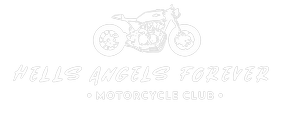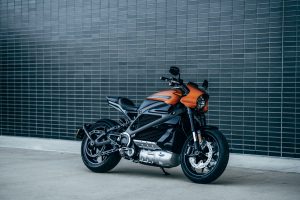Demonstrations were held in Münster, Germany, by members of the Hells Angels Motorcycle Club.
This week, one of the largest biker gatherings in the world, the Sturgis Motorcycle Rally, will take place in South Dakota. The rally will bring with it a flood of people covered in tattoos and leather, as well as thousands of roaring Harleys. As hundreds of iron-horse aficionados descend upon the modest town for a week of open roads, flowing wine, and hard living, the population of the town is expected to increase by more than sixty times its current level. The rally draws a larger-than-average number of weekend warriors who are looking for a temporary diversion in the form of hedonistic partying. On the other hand, for the thousands of people who are part of the Hells Angels, the most notorious motorcycle gang in the United States, this is not a holiday but rather a way of life.
The outbreak of Biker Violence Leaves Australia on EdgeThe outbreak
There is still a lot that is unknown about the Angels, despite the fact that the band has been around for a long time and is quite famous. The past of the gang as well as its current membership are both opaque subjects, and what occurs within the organization’s highly clandestine clubhouses has a tendency to remain within those clubhouses – just as the bikers want it to be. In 1948, in Fontana, California, the Hells Angels Motorcycle Club was established. This was during a time when excess military equipment made motorbikes accessible and the calm years following the war left many veterans feeling bored and yearning for adventure. Otto Friedli, a veteran, is credited with establishing the club. At the time, he had recently parted ways with the Pissed Off Bastards, which is considered to be one of the earliest postwar motorcycle clubs. At the time, the Pissed Off Bastards were engaged in a heated conflict with a competing gang. During World Wars I and II, bomber squadrons commonly went by the name “Hell’s Angels,” which was also the name of a film directed by Howard Hughes in 1930 and centered on the Royal Flying Corps (the phrase lost its apostrophe over time). Members of the club refer to it as the HAMC, and for many years it was exclusively a California-based organization. In 1961, Auckland, New Zealand became the location of the first chapter to form outside of the state. As time went on, membership in the club expanded to encompass the majority of states and at least 30 countries. This expansion was spurred by the appealing vision of lawless outlaws forming their own rules. The film The Wild One, starring Marlon Brando, released in 1954, and Hunter S. Thompson’s narrative, published in 1966, of spending a year with the gang in northern California were both important contributors to the formation of that famous image. The Angels claim that the average member logs 20,000 miles on their motorcycle each year, with Harley-Davidsons serving as the Angels’ main mode of transportation. And members continue to refer to themselves as “one percenters,” a brag that dates back more than half a century and is based on the proverb that one percent of troublemakers are responsible for 99 percent of respectable bikers having a negative reputation.
It is not fair that the club has a reputation for being a criminal organization.
Despite this, the Angels are adamant that the club does not merit its reputation as a criminal organization. They cite to the club’s consistent charitable activities on behalf of children and veterans as evidence of this. When the Hells Angels do the right thing, nobody remembers it, and when they do the wrong thing, nobody forgets it, it says under a banner at the bottom of their website. However, many members of the Hells Angels motorcycle club have demonstrably lived up to the lawless image that is associated with the organization. Arrests and convictions for drug trafficking (particularly involving meth), assault, possession of weapons, and even murder have followed the group for decades. Most infamously, the Hells Angels were accused of hatching a scheme to murder rock legend Mick Jagger in the aftermath of the epic riot that took place in 1969 at the Altamont Speedway in California, where the gang was providing security. Following a biker stabbed to death a spectator who had grabbed a gun during the melee, the killing was determined to have been in self-defense, and charges against the biker were dismissed. The front man for the Rolling Stones had attacked the Angels after the incident. (A large portion of the event was filmed for a documentary about the Rolling Stones that was released in 1970.) A multiyear turf war involving the Hells Angels in Scandinavia in the 1990s reportedly included attacks with machine guns, rocket launchers, and grenades, and it claimed close to a dozen fatalities. The conflict took place over the course of Scandinavia. More recently, in 2002, a violent confrontation between the Hells Angels and the rival Mongols gang took place in a casino in the state of Nevada, resulting in the deaths of three motorcyclists. In 2007, a lady was discovered badly battered at the entrance of the group’s fortified headquarters in the East Village of New York City. Heavily armed police raided the building with helicopters hovering overhead, but no charges were immediately made against the individuals involved. As a direct consequence of this, the law enforcement officials are used to treating the Hells Angels with suspicion. Teams of police officers met the bikers in Minnesota as they drove to Sturgis this summer as a show of force. SWAT teams have been monitoring the Hells Angels’ charity motorcycle trips in case there is an incident. Officer Steve Ovick was quoted in a local newspaper as saying, “You don’t poke a hornets’ nest with a stick, but you sure do like to know where the hornets’ nest is at.” [Citation needed]
Jackets made of leather or denim emblazoned with a red and white winged “death’s head” insignia are popular.
Members of the Hells Angels can be identified by the red and white winged “death’s head” logo, the letters HAMC, and frequently the number 81 stitched on the back of their leather or denim jackets. These letters and number stand for the eighth and first letters of the alphabet, respectively. Hells Angels, similar to soldiers who wear emblems on their military uniforms, wear a number of patches on their jackets to indicate their standing in the group; the precise meaning of each patch is only known to other members of the Hells Angels (full-fledged Angels are known as full-patch). Members of the gang are only familiar with one another through their road names; a memorial page on the website of the gang includes memorials to deceased motorcyclists who are only known by their road names, such as Triumph Viking and Fat Ray. If you want to join the Hells Angels but you don’t want to put in a lot of work, I wish you the best of luck. The information on membership on the website may generally be summed up as follows: “If you have to ask the question, you probably won’t understand the answer.” (If you are unsure about something, you should ask questions)





